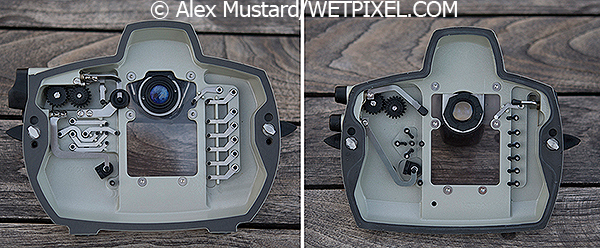Field review: Nikon D7100 and Subal ND7100
The Nikon D7100
The Nikon D7100 produces very large images (6000x4000 pixels), although other image areas can be specified, which may be of interest to competition photographers (where no cropping is allowed). Of note is a 1.3x crop (of the1.5x DX crop) where the AF focus points cover the entire frame.
The camera also shoots HDMI video in 24p, 25p and 30p. And the uncompressed video feed can be read directly from the HDMI port to an external recorder. I am not going to cover video in this review. I have dived with close to 200 underwater photographers in 2013 and seen less than a handful actually shooting video with their SLRs on dives.
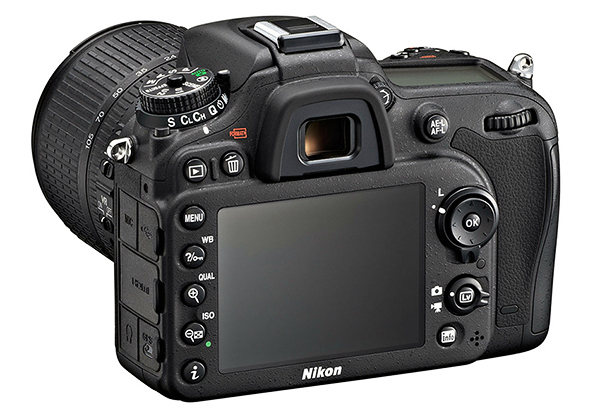
The camera does not feel as strong as a D300, but neither is it as heavy. It certainly feels well built. Its specifications read like a pro body: 100% viewfinder, flash synch to 1/320th, dual card slots, and Nikon’s current best AF system. Unlike a pro body, it uses dual function buttons on the back of the camera for White Balance, Image Quality and ISO. It has dedicated buttons for both INFO and I – to access major options quickly.
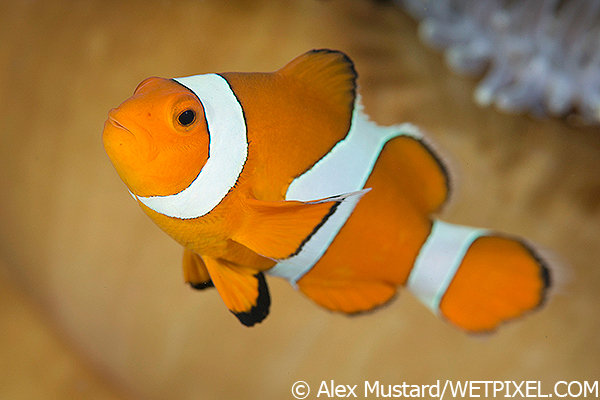
A major complaint about the D7100 is that although it can shoot at 6 frames per second, the buffer soon clogs with the 24MP RAW files. This is easy to demonstrate if you hold the shutter down and point it at the wall. And coming from my own D4, which has a buffer that is impossible to fill, I was expecting to encounter this problem with my snap happy approach. However, in real world underwater photography in Bali, I never found myself waiting for the camera’s buffer. However, if you specialize in big animal, available light photography, then you might want to consider a faster camera. The only time I was waiting for the D7100 was when testing the TTL and had to wait for the internal flash to recharge. TTL Tests completed (TTL works well, BTW!) I went back to manual shooting and no more shooting lag.
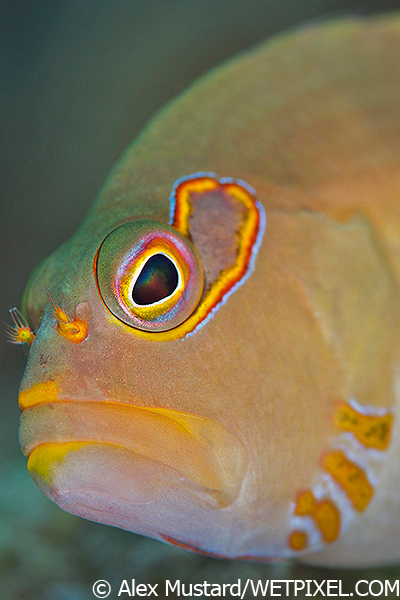
Finally, a techie headline of the ND7100 is that like the D800E it does away with its optical low pass filter so that the sensor can resolve even more detail. As a user, particularly an underwater user, I am not sure you will ever be aware of or need to be concerned by this. It is a great sensor – just shoot it.
Subal ND7100
The Subal ND7100 housing is clearly related to their ND7000 housing and it takes an eagle eye to spot the difference. I was able to compare the two, side by side in Bali, because Burt Jones was diving with me and using his Subal ND7000. Burt has logged over 10,000 dives, including being the first to dive many of Mexico’s Cenotes, naming Cannibal Rock in Komodo and most recently writing the definitive dive guide for Raja Ampat and Bird’s Head in West Papua. He uses Subal housings because he is diving all the time and in his experience “they just don’t go wrong”.
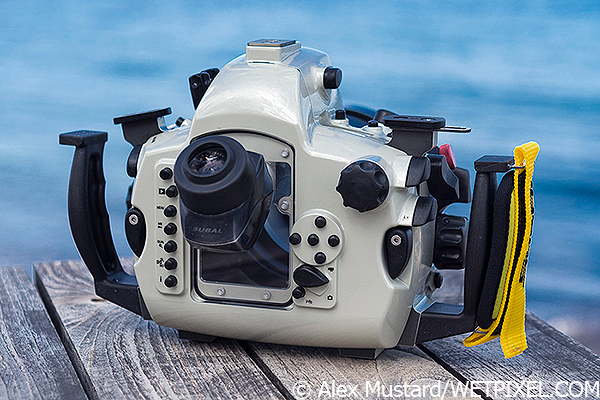
The ND71000 housing provides access to the camera’s major controls. Missing on my loaner housing (and blanked off) was the control for the Function and Preview buttons on the front of the camera. I am not sure if this feature is an optional extra, or Subal didn’t fit it on the review housing to ensure I had it in time for my trip. On my Subal ND4 I find these very useful.
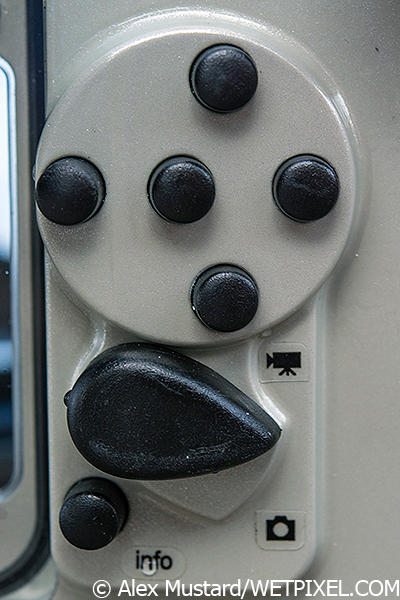
The primary controls of shutter release, aperture and shutter speed of the housing are exemplary. The controls all fall easily to hand and are ideally geared for ease of use. Subal’s long standing handles make this a truly single handed housing, which was useful around new moon in Bali, when the current was whistling through Tulamben bay and I needed that other hand to hang on.
The Subal ND7100 uses a different type of mounting tray to my ND4 housing, which makes loading the camera incredibly easy and positioned it perfectly for every control to work faultlessly throughout the review. You simply slide the camera into the housing, the latch clicks and every control just lines up. This is most easily demonstrated in the video below. It is loaded in seconds.
All housing manufacturers complain that both Nikon and Canon produce cameras that vary a small amount in their dimensions. This is rarely the main body, but often push buttons stick out further or are slightly recessed on some individual bodies. And for housings that are engineered with controls that have tolerances of millimeters this can cause problems across all brands. But in my experience with the ND7100, the fit was exquisite.
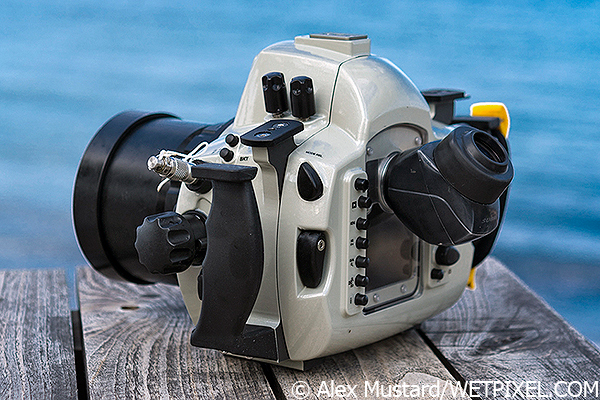
A feature I really like is that Subal have provided multiple mounting points on the base of the housing to attach tripods, trays and other accessories. Beneath the right hand handle there is a mounting point for a screw-in ball. I used this when setting my housing up for vertical shooting, mounting my strobe arm in this position and removing the left handle completely, which makes such a difference in getting the camera as low as possible when shooting verticals on muck dives. I wish my ND4 had a similar strobe mounting point below the handle.
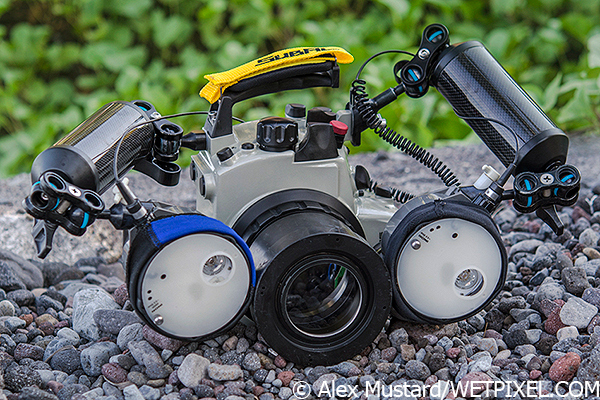
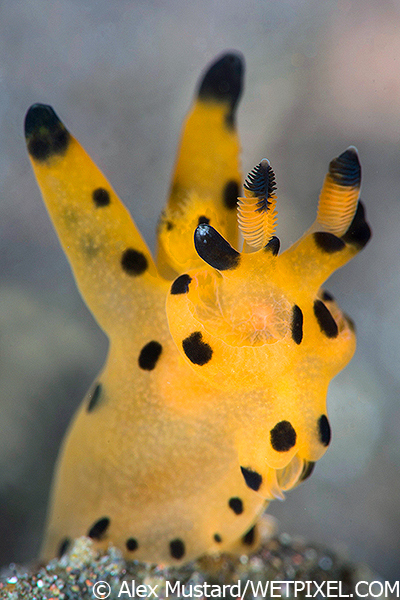
Others? I like that Subal still provide a window for viewing the top LCD screen on the camera. Nikon still think this screen is important for photographers, I am glad Subal agree. The ND7100 has an excellent lever on the right for accessing the Record button of the camera. Like most underwater photographers I am not that interested in shooting video with my stills camera and having got used to the Olympus OM-D, I do wish that the control buttons on the D7100 were all customizable. I’d love to be able to program a useful feature to the record button and, therefore, make more use of this ergonomically placed housing lever.
Gripes? Overall the housing is very good and very close to neutral in the water with double strobe arms with buoyancy. Subal don’t yet have a standard vacuum system on their housings, which I think would be a valuable addition, particularly given that their port lock system only locks the first port section attached to the housing. There are plenty of third party solutions on the market, but, with one of these in mind, I would like to see a spare (three rather than two) electronic synch socket. A third electronic synch socket would be useful for those who want to fit their own vacuum system and still not have to use a Y cable for two electronically synched flashes. Those who only ever use optically triggered strobes would disagree as you have two spare electronic ports for fitting a vacuum system.
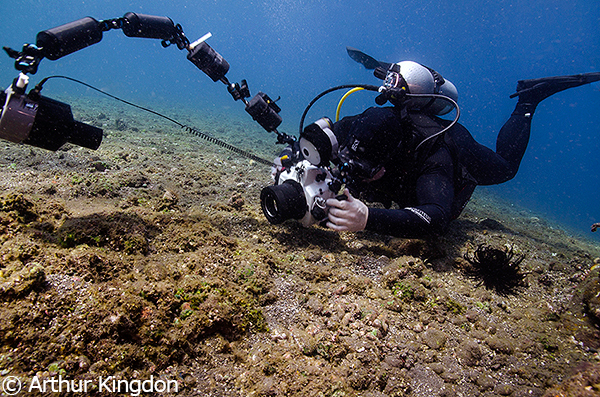
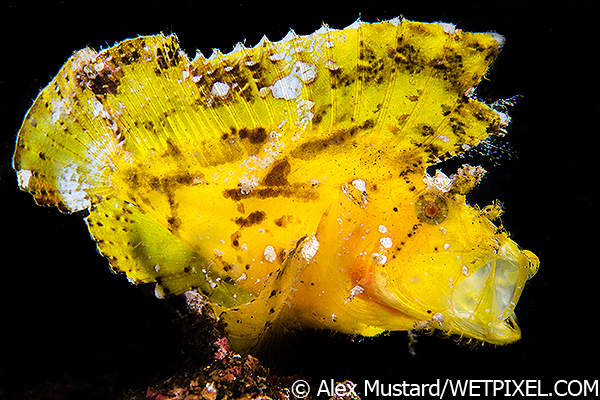
Finally, I was able to compare the ND7100 with the ND800 as experienced Australian photographer, Don Howie, was also staying at Scuba Seraya Resort and was shooting that system. (For those interested in such things, there were six photographers staying at the resort during my visit and four were shooting Subals and two Aquaticas). The ND800 is a considerably larger housing, but otherwise outwardly very similar with the same knobs, dials and levers fulfilling the same roles. Holding and shooting them in the water they are very similar too, the similarity in viewfinder and autofocus actually makes them hard to tell apart. Both cameras actually take the same battery, and I can see some people planning on shooting both systems. Interchanging between them would be very easy.
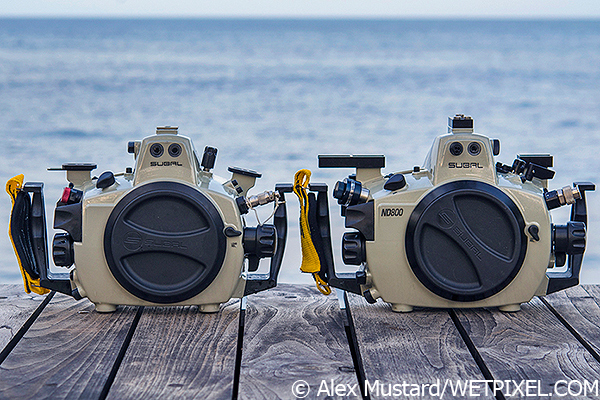
Backscatter lists the ND800 at $4000 USD and the ND7100 at $3500 USD, which makes the ND7100 actually look a bit of bargain, considering it has all the same controls. However, once you open them up, you see the difference. The push button controls on the ND7100 are delrin, while the ND800 is built like a tank, with metal controls, which move the push buttons to significantly more ergonomic positions closer to the handles of this larger housing. The ND800 also has more electronic synch sockets as standard.
